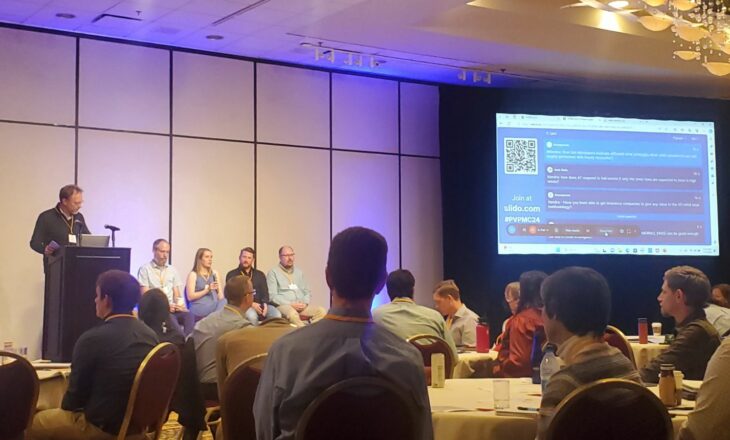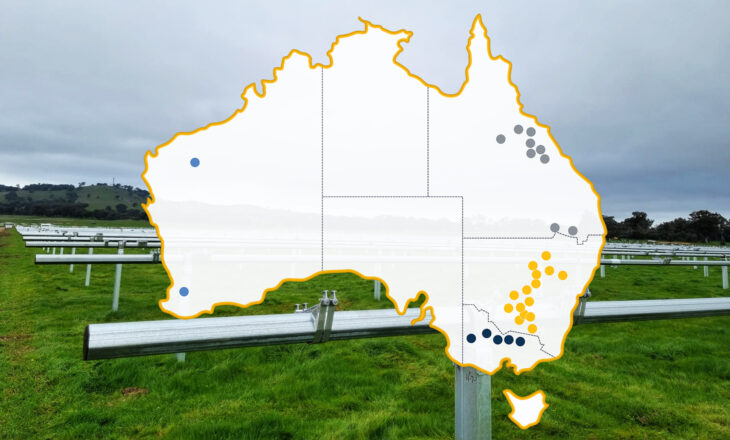La clave para operar con éxito una planta fotovoltaica es maximizar la generación de energía y, al mismo tiempo, vigilar para minimizar las ineficiencias que conducen a la reducción de los beneficios o incluso al bajo rendimiento.
La plataforma de software de optimización de energía SmarTrack™ de ARRAY Technologies es una nueva oferta disponible para garantizar que los propietarios de activos están utilizando la mejor estrategia de seguimiento posible para optimizar la producción de energía.
Optimizando el rendimiento con innovadores algoritmos de aprendizaje automático, SmarTrack minimiza el sombreado entre filas y aumenta la producción cuando la luz es difusa.
Backtracking: Una solución inicial imperfecta
Uno de los obstáculos más claros para la captación eficiente de energía es el sombreado entre filas. En pocas palabras, como los seguidores permiten que los módulos sigan al sol, puede producirse un sombreado de panel a panel durante las primeras horas de la mañana y las últimas de la tarde.
El sombreado de una celda de un módulo puede causar una pérdida de producción de todo el panel, no sólo de la zona sombreada. Esto significa que la caída global de la producción de energía durante el sombreado de una fila a otra puede ser significativa.
El backtracking tradicional resuelve este problema, hasta cierto punto.
El backtracking, que se utiliza desde hace más de dos décadas, se refiere a una estrategia de seguimiento en la que los módulos se desplazan a ángulos menos pronunciados durante las horas valle de producción para evitar el sombreado fila a fila: las horas matutinas y vespertinas de recolección de energía. Esta estrategia aumenta la producción de energía durante esas horas de la mañana y de la tarde.
Una estrategia de backtracking puede presentar problemas en términos de practicidad. En un emplazamiento ideal en el que la altura de las filas es totalmente igual y la pendiente del terreno es perfectamente plana, el backtracking puede tener mucho éxito. Sin embargo, estos emplazamientos ideales rara vez existen en el panorama actual de la energía fotovoltaica a gran escala, y un backtracking conservador o ineficiente en emplazamientos que no son perfectos puede provocar graves pérdidas de producción. Además, a medida que aumente la popularidad de la producción de energía solar, se construirán más plantas en terrenos difíciles e irregulares y en regiones de menor insolación. Por eso, la eficiencia de los emplazamientos es cada vez más importante para la rentabilidad.
“En el mundo real, el diseño de los emplazamientos nunca es perfecto”, afirma el Dr. Kyumin Lee, Director de Innovación de Productos de ARRAY Technologies. “Nuestras investigaciones indican que el backtracking convencional y conservador no funciona en la mayoría de los lugares”.
Para tener en cuenta la variación de la altura de las filas y la inclinación del terreno, Lee afirma que los modelos tradicionales de rastreo tenían “un botón para girar” en forma de ratio de cobertura del terreno. Al ajustar este parámetro, el algoritmo de seguimiento tradicional puede ser forzado a retroceder más agresivamente para evitar el sombreado entre filas.
“Ajustar el modelo de rastreo convencional puede ayudar, pero no es la solución óptima”, afirma Lee.
Cómo SmarTrack potencia las estrategias de backtracking y luz difusa
Teniendo en cuenta estas preocupaciones prácticas, ARRAY Technologies ha desarrollado SmarTrack.
Con SmarTrack, las instalaciones solares fotovoltaicas pueden tener en cuenta la variación de la altura de las filas y el terreno irregular, lo que garantiza que se minimice el sombreado entre filas y que un emplazamiento no pierda una valiosa producción por un excesivo backtracking.
“Con SmarTrack, tenemos en cuenta la inclinación del terreno”, dice Lee. “No se desperdicia la luz del sol. Es contrario a la intuición, pero la revelación es que siempre estamos retrocediendo la cantidad mínima para maximizar la producción de energía. El ángulo es fundamentalmente diferente de lo que se puede calcular con un modelo convencional. Estamos utilizando un modelo de backtracking, aprovechando el aprendizaje automático, que refleja mejor las limitaciones típicas del mundo real en un lugar”.
Incluso una ligera ampliación del ángulo del sol cuando comienza el backtracking -por ejemplo, de 64 a 67 grados en determinadas condiciones del lugar- puede tener un impacto significativo en la ampliación de los “valles” de producción de energía en un lugar.
“No se puede dejar de lado el backtracking, porque si se ignorara por completo, se perdería demasiada energía cuando el sol está bajo”, dice Lee. “Pero no se quiere retroceder más o más tiempo del necesario. La idea de SmarTrack es producir más energía retrocediendo menos”.
Uso del aprendizaje automático para una implementación sencilla y eficiente
Una de las principales ventajas del modelo que utiliza SmarTrack para “aprender” la estrategia de seguimiento óptima para un terreno es que no sólo es aplicable al periodo en que se completa el aprendizaje, sino que los parámetros aprendidos por el modelo son válidos durante toda la vida útil de la planta, lo que simplifica las operaciones en general.
El proceso de aprendizaje es también extremadamente rápido, dijo Lee, y a menudo tarda unos días en completarse dependiendo de las condiciones meteorológicas durante el proceso de aprendizaje de SmarTrack.
Kendra Conrad, ingeniera principal de ARRAY Technologies y veterana profesional de la industria solar, dijo que SmarTrack ofrece ventajas incomparables también en términos de costes.
En concreto, aunque una optimización manual de la puesta en marcha puede conseguir un resultado significativamente mejor, este proceso es largo y costoso.
“En realidad, se puede optimizar la generación de energía relativamente bien cuando se pone en marcha una instalación energética de forma manual”, afirma Conrad. “Sin embargo, es un proceso muy lento. Requiere personal, lleva tiempo y no va a obtener un resultado tan bueno -incluso si lo hace perfectamente- en comparación con SmarTrack”. La ecuación fundamental del backtracking tradicional no permite tener en cuenta la variación de altura entre filas o la pendiente”.
SmarTrack ha sido validado por empresas de ingeniería independientes como DNV GL para seguir demostrando su eficacia y ayudar a calcular la rentabilidad del proyecto.
Póngase en contacto con nosotros para obtener más información sobre la optimización de la producción con estrategias de backtracking y luz difusa más inteligentes, o para obtener un presupuesto para su planta.
Click here for other articles by this author



